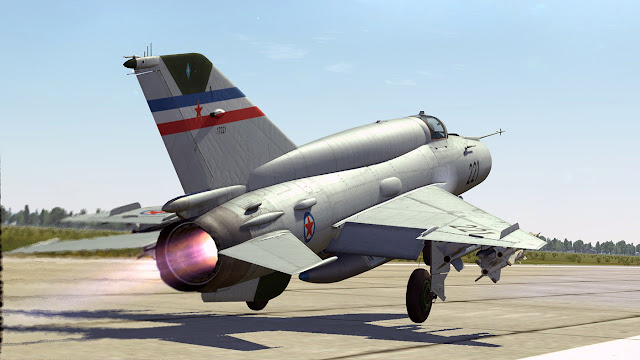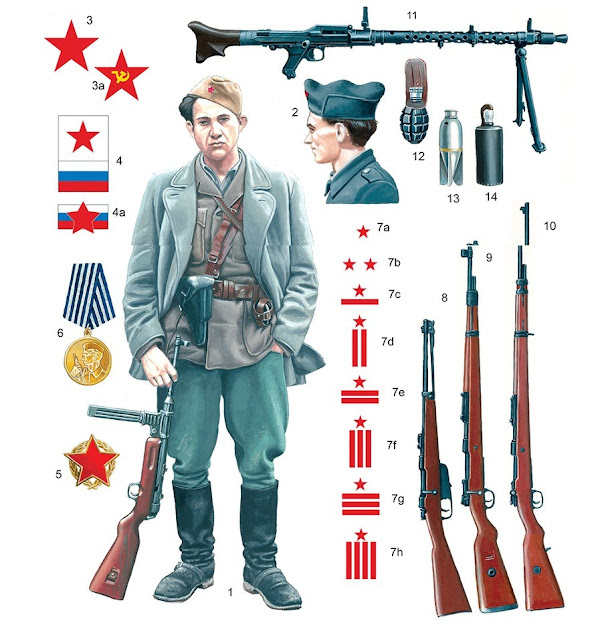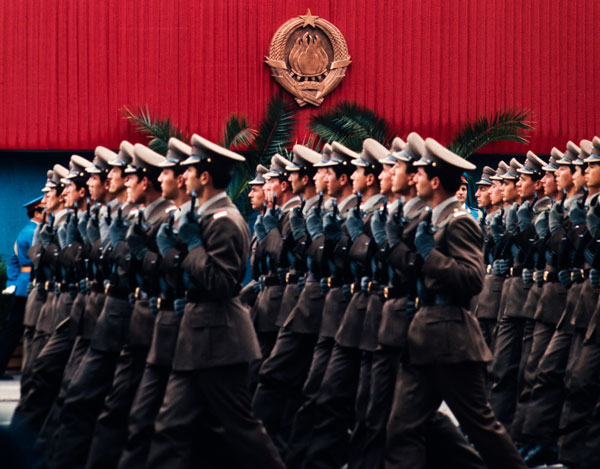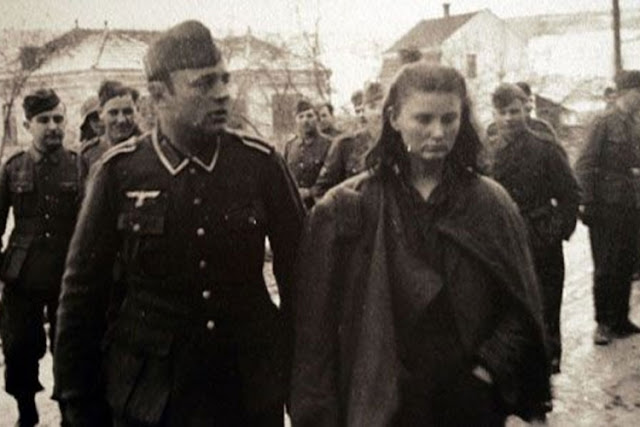History of Yugoslav use of the fighter-interceptor MiG-21
 |
| Yugoslavian AF Mig-21bis |
For more than 53 years, the MiG-21 a supersonic jet fighter and interceptor aircraft have been taking off from the Batajnica airport, and this type of aircraft is one of the most important and best-known combat aircraft in the history of military aviation.
For decades, this aircraft was the basic aircraft in Yugoslavia and the only dedicated air defense aircraft. The development of combat aircraft in the 1950s was very dynamic and accelerated, so the military top of Yugoslavia at the end of that decade quickly realized that it was necessary to acquire a new modern fighter jet that would replace American F-86 Saber aircraft. In 1958, we began to think about moving to the fighter speed of two maha seriously and the Yugoslav Air Forces (JRV) Command began with analyzes of all possible solutions.
 |
| Fighter MiG-21F-13 22540 at Pleso Airport. |
Great attention was drawn to the French Mirage-III (Mirage-III) fighter plane, then one of the most modern combat aircraft. Efforts to acquire this plane were interrupted by politics because Yugoslavia came into conflict with France for the support of Algeria. Even plans were made to reassign units to a French aircraft.
Plans for the purchase of new fighter jets for JRV
Yugoslavia then turned to the USSR, with which in 1954 again, after the Informbiro Resolution in 1948, established good relations. At the beginning of 1960, there was an opportunity to start negotiations to acquire a new fighter jet, and the JRV Command requested that a license is granted to the MiG-19.
 |
| Front MiG-21F-13 (L-12) 22501 upon landing with the aid of the braking parachute. On the right side, you can see one-piece canon NR-30 caliber 30 mm. |
At Kubinka Airport on October 1 of the same year, the JRV delegation had the opportunity to see the MiG-19 in flight and during the negotiations, the Soviets offered a license, but they noted that this plane is no longer produced. The condition for procurement was a license, and on October 10, at the final meeting of the Soviets, it was said that if there were no purchases of the MiG 19, it might be possible to procure a new one, as it was said at the time - a modern fighter aircraft, if it would, of course, be approved by the USSR government.
 |
| Yugoslav Air Force Combat Aircraft |
Later on, at the reception on the same evening, the Yugoslav delegation learned that the new MiG-21 plane was already in serial production. Further negotiations were very difficult because the Soviets, due to the withdrawal of the Yugoslav from a favorable bid for the MiG-19, concluded that the SFRJ did not intend to buy Soviet planes but that by this move they pressed the US to donate new weapons.
In January 1961, through the Yugoslav embassy in Moscow, 200 MiG-21 aircraft were requested, of which 26 finished aircraft, 12 in parts that would be made in Yugoslavia and the rest should be produced under license. Two months later, the Soviets offered 36 aircraft in 1962 and technical documentation for production in 1963-64. Instead, there was a supply of 200 ready-made aircraft in the period 1962-1966.
 |
| L-12 22520 armed with two infrared homing air-to-air missiles R-3S |
In April 1961, with the arrival of the Yugoslav delegation to Moscow, direct negotiations on the purchase of MiG 21 began, and the visit was to prepare contracts for the procurement of not only fighters but also tanks and radars. On the fourth day of the visit, specifically on April 24, the Yugoslavs were shown MiG-21, and the leader of the Yugoslav delegation reported that the impression of the delegation on the tactical and technical characteristics of the aircraft was favorable.
The Yugoslavs were looking for a license for aircraft, engines and K-13 air and air missiles, although at the beginning it was quite clear that neither the engine nor the rocket would be produced. The plane cost was $ 576,000 and $ 4,5 million for a license, without weapons. These prices were slightly higher than the expectations for Yugoslavia, but the USSR insisted that the prices be the same as for the countries of the Warsaw Pact.
 |
| Yugoslav Air Force MiG-21bis fighter armed with 500kg bombs |
In the final negotiations, the initial requests were dropped and the purchase one regiment of the MiG-21 aircraft was requested as part of the territorial air defense. The procurement contract was signed on August 2, 1961, in Moscow and envisaged the import of weapons through five-year plans with a special name and the first plan through which the acquired MiGs 21 had the name "Romania".
Yugoslavia is also almost the same time with some of its neighbors became a beneficiary of fighter jet speed two match occasions since then Hungary, Romania, and Bulgaria have become users of MiG-21 and Italy is a little later, in March 1963 ushered in armaments American F-104.
Introducing a new aircraft into use
In February 1962, the Yugoslav Air Forces (JRV) and the Air Defence (PVO) were selected to redeem a new type of fighter. They sent first to Rajlovac near Sarajevo for a two month accelerated course of the Russian language and arrived in Moscow on May 5th.
 |
| L-12 22522 armed with two solid launchers NRZ caliber 57 mm |
Pilots and part of the technicians were then sent to Frunze airport in Kyrgyzstan and other technicians at Alma Ata in Kazakhstan. They were members of the 204th Aviation-fighter Regiment (LAP), which then had two squadrons, the 127th and 128th Fighter aviation squadron (late), and the unit was part of the 11th Division of the PVO.
In order to adapt first to the technique of eastern origin, pilots flew on two-seater MiG-15UTI and single-track MiG-17. In the basic flying training for the MiG-21, a 10-hour ride is planned. After completing retraining pilots and technicians have returned on 20 August and the first five MiG-21 variants of the MiG-21F-13 landed at Batajnica in early September.
 |
| Yugoslav MIG 21 fighters on formation. |
One of the main problems in rebuilding was the lack of two-seater, and the Yugoslavs requested the delivery of the double MiG-15UTI. But the Advice argued that there was no need for it and that it could be switched directly from a theoretical conversation from a classroom to a single plane. However, in the 204th lap, the stance prevailed that the preparations had to be made on a two-seater flight so the future pilots of the MiGs 21 flew on US training aircraft TV-2.
In the contract on the procurement of MiG 21, the Yugoslav side committed to keeping TT data for a limited time as a strict confidential secret. That's why the internal airplane marking has been introduced, which has been held up to the present day. The designation for the MiG-21F-13 variant of the MiG-21F-13 (Manufactures-74, the NATO designation 'Fishbed-C') was L-12 (L-fighter), the Tuman R11-F300 engine had the MM-12 mark and an air-air K-13 (R-3S) was labeled with SR-20.
After the first 5 aircraft that were received in September 1962, the next three aircraft arrived in May 1963. With the planes in 1962, K-13 missiles arrived. In August of that same year, 5 more aircraft arrived, which resulted in the reception of the first squadron, while the other one received 14 airplanes in August 1964. The remaining 12 planes (out of a total of 40 ordered then) arrived in October and November of the same year. In May 1966, the last, 41st aircraft arrived as a replacement for an airplane that had an engine fired on April 8, 1965 - the pilot was able to land, but the damage on the plane was large and he was discharged due to the unreality of repairs.
 |
| The MiG-21F-13 interceptor hunter's stand in the second half of the sixties, as well as the last copy of the L-12 22541 that arrived in 1966. |
MiG-21F-13 airplanes carried the registration numbers 22501 to 22541. By the end of 1964, the redundancy of the 204th lap was completed, which consisted of three hunting squadrons, 126, 127, 127 and 128th Squadron, each with 12 aircraft and a 4-plane airborne unit. Confirmation that the regiment had mastered the new technique was the first target shooting in July 1965. The missile targets of the RM-3 rockets K-13 (R-3S) above the Montenegrin coast were targeted at the Bar Bar and both launched missiles hit targets.
In August 1968, Yugoslav Air Force (JRV) consisted of 38 MiG-21F-13 aircraft. The last trial flights were carried out in March 1980 when they encountered two hours. The aircraft was kept until May 11, 1981, when a decision was made on their withdrawal from services. There is information that part of the plane was later sold to Egypt. During the service of the JRV and the PVO on the MiG-21F-13 aircraft, 23,559 hours and 15 minutes of flight were made and 17 aircraft were lost, of which 11 pilots lost their lives in different circumstances.
Sources
tangosix.rs
wikipedia






Thank you for sharing this helpful information with us in your blog. We share important information in our blog as well like MiG-21 Fishbed. For more visit PlaneHistoria website.
ReplyDelete